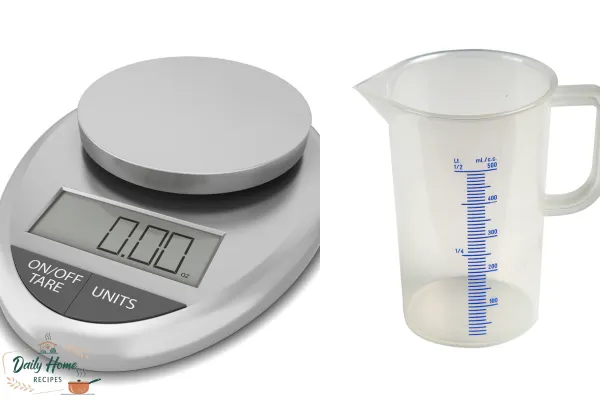Healthy food’s not a free pass—too much still throws your goals off. The fix? Get the portions right from the start.
If you’re eating for protein, eyeballing isn’t enough. One extra scoop here, one missing gram there—by the end of the week, you’re way off track. That’s where portion gear comes in. These tools help you eat what you need, skip what you don’t, and stop second-guessing every meal.
Why Portion Control Matters for Protein Eaters
Protein’s great—but too much or too little throws everything off. If you’re trying to build muscle, stay full, or just keep things balanced, getting your portions right actually matters.
Too little protein = low energy, constant snacking
You’re hungry two hours later and wondering why. It’s probably not enough protein.
Too much = extra calories, slower goals
Even the “good stuff” adds up. Extra chicken, nuts, or shakes might be tipping your numbers.
Guessing is unreliable
A “serving” looks different in every kitchen. A small chicken breast might be 15g of protein—or 35g. That’s a big difference.
Dialing it in once saves you effort later
Once you know what your protein portion actually looks like, you can pack faster, prep better, and hit your goals without doing the math every time.
Tools That Make Portioning Easy
You don’t need a kitchen scale and food journal every time you eat—but a few solid tools make it way easier to stay consistent without overthinking.

Digital Food Scale
Game-changer if you’re tracking grams. Helps you measure protein sources (like meat or tofu) accurately before you pack them up.
Portion-Control Containers
Think bento-style boxes with measured sections—half a cup here, one cup there. Good for visual people who don’t want to weigh everything.
Measuring Cups & Spoons
Old-school but still solid. Especially for things like oats, yogurt, or nut butters where a spoonful can sneak up on you.
Protein Scoops
Use the scoop that comes with your powder—but double-check the grams. Some scoops aren’t one-size-fits-all.
Color-coded Systems (like 21 Day Fix)
Not for everyone, but if you like plug-and-play systems, these help keep portions in line without tracking numbers.
Do you need all of this?
Nope. Just pick what fits your style.
Some people love scales. Others just want to know their scoop isn’t lying. Do what helps you stay consistent.
Recommended Products for Office Use
You don’t need a drawer full of gear. Just a few smart picks to make lunch easier, cleaner, and more on-point when you’re not at home.
1. Small digital food scale
Flat, lightweight, and fits in your drawer. Use it to double-check portions if you’re logging food or adjusting midweek meals.
2. Leak-proof lunch containers
No one wants soup in their laptop bag. Brands like Bentgo, Monbento, or even classic Rubbermaid get the job done. Bonus if they’re microwave-safe.
3. Portion-marked containers
Pre-labeled with cup and half-cup sizes, so you don’t have to measure every time. Great for rice, yogurt, or protein.
4. Collapsible measuring cups
They fold flat and live in your lunch bag. Super useful for portioning cereal, oats, or even scooping peanut butter right at your desk.
5. Scoop containers for protein powder
Just enough for one serving. Toss it in your work bag with a shaker and water bottle—no clumps, no mess.
H3: Do you need this much stuff?
Not really. Just one or two of these can make your lunch game way less stressful.
And if your office has a fridge and microwave? You’re already halfway there.
How to Calculate Your Protein Portions
You don’t need to obsess. But if you’re trying to eat enough protein, you do need a basic idea of what “enough” actually looks like.
Step 1: Know your number
Rough guide? Take your weight in pounds and eat about that many grams of protein in a day. So if you weigh 140, aim for 130–140 grams. That’s it.
Step 2: Split it up
Don’t wait ‘til dinner to hit your goal. Spread it out. Say you eat 3 meals and 1 snack—try getting 30–40 grams at each meal, and a bit at snack time.
Step 3: Learn what’s in your food
This is where most people go wrong.
- Chicken breast (palm-sized): ~25g
- 2 eggs: ~12g
- Scoop of protein powder: ~20g
- Greek yogurt (3/4 cup): ~15g
- Handful of lentils or beans: ~9g
Start paying attention and it adds up fast.
Step 4: Don’t sweat perfection
Some days you’ll overshoot, others you’ll miss it. That’s fine. Just stay close and keep it moving.
Do I really need an app?
Nope.
Use one if it helps—but if you know your usual foods, you’re already ahead.

Common Portion Mistakes to Avoid
You can eat all the “right” foods and still miss your goals if the portions are off. Here’s where most of us mess up—and how to stop doing it.
Mistake 1: Thinking a spoon is a portion
You eyeball some chicken or yogurt and think “that looks about right.” Then wonder why you’re still hungry or not seeing results. Measure it once, just to be sure.
Mistake 2: Using the container as your guide
Just because it fits in your lunchbox doesn’t mean it’s a good portion. Some meals need more, some less. The box isn’t your coach.
Mistake 3: Letting healthy stuff slide
Nuts, peanut butter, avocado—they’re great, but easy to overdo. A “little extra” adds up quick when you do it every day.
Mistake 4: Skipping protein early in the day
If you wait until dinner to catch up on protein, you’re gonna overeat or feel like trash. Front-load a little at breakfast and lunch.
Mistake 5: Not checking your regular go-tos
That bar you love might have 20g of protein—or it might have 5 and a ton of sugar. Flip the label and look once. That’s all it takes.
What actually works?
Pay attention for a few days.
Not forever. Just long enough to know your usual meals. Once you know, you don’t need to track—you’ll just get it.

Leave a Reply